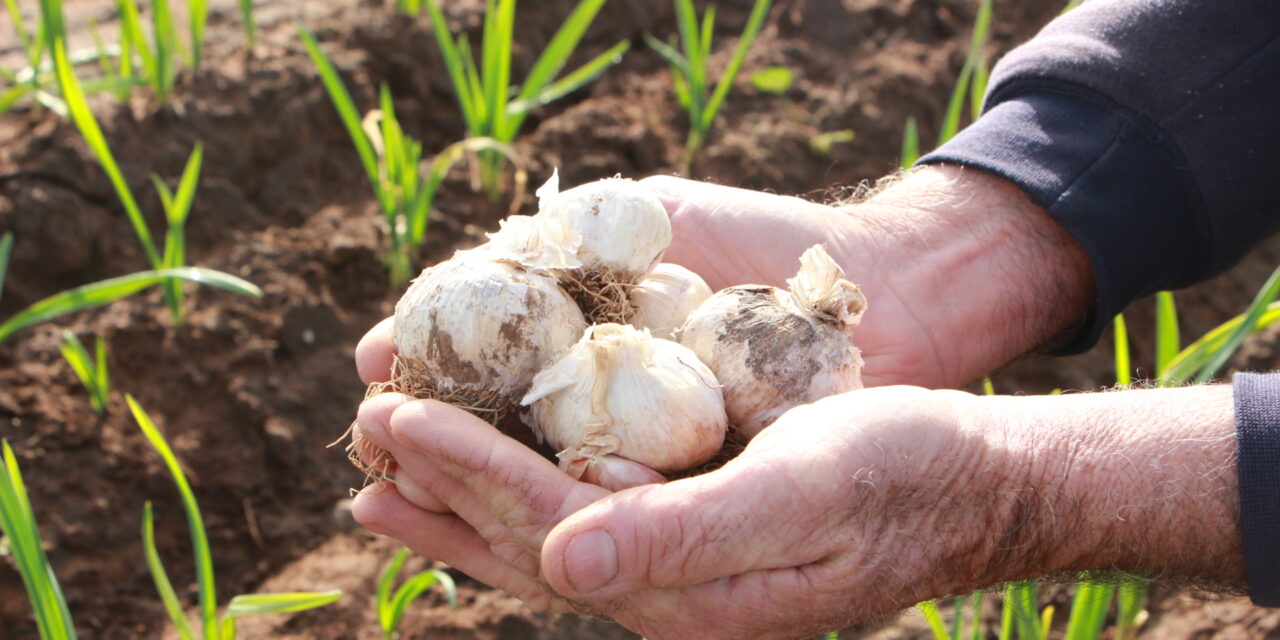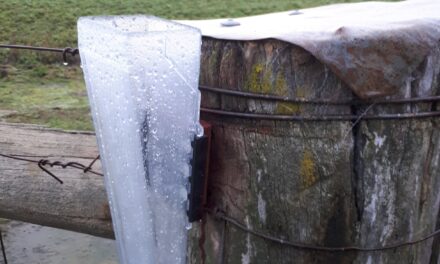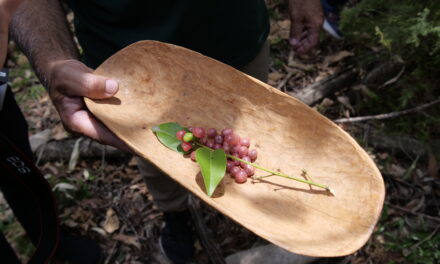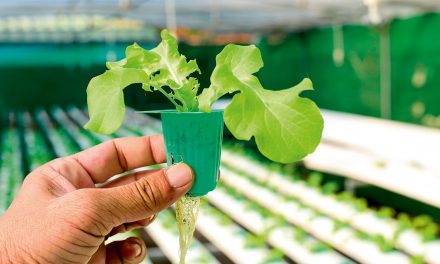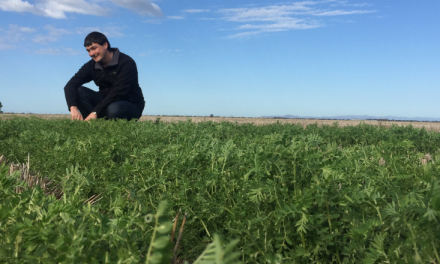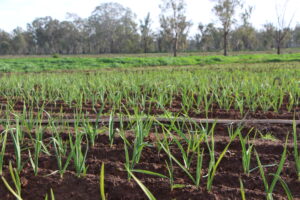 Last century, along the Murray River, the little NSW locale of Koraleigh would become home to a farming family that had an agricultural epiphany — starting an evolution from beef cattle and vegetable production to having a gutsy go at garlic – just about that moment in time when the pungent little bulb was taking off in mainstream Australia.
Last century, along the Murray River, the little NSW locale of Koraleigh would become home to a farming family that had an agricultural epiphany — starting an evolution from beef cattle and vegetable production to having a gutsy go at garlic – just about that moment in time when the pungent little bulb was taking off in mainstream Australia.
If you were Peter Hackett, the first word that would spring to mind if someone mentioned garlic would be an easy choice.
Touchy.
Give him the option for two words or more and it might stretch well beyond ‘very touchy’.
And trust him — Peter knows more than a thing or two about more than one variety or two of garlic.
All the offspring of the two different types of garlic — the soft neck (Allium sativum) and hard neck (Allium ophioscorodon), sometimes referred to as stiff neck.
What’s more, Peter is relentless in his search for the next big thing on the local garlic scene, which — right now for him — would have to be the Creole varieties.
It’s a good-sized bulb for type, with up to 60mm diameters, coming to chez Hackett at downtown Nyah via Tasmania, with white outer skins and nine to 10 outer and three inner purple cloves of good size.
Be warned, while it ranges between mild and hot-flavoured, it comes with the kicker of what the industry euphemistically refers to as “delayed extreme heat”.
Peter’s parents Betty and Owen founded the family farm, but the garlic didn’t arrive until 1990, when an Agriculture Department extension officer suggested the Hacketts have a look at a winter crop.
Until then, Tooley had been a producer of quality vealers, prime lambs and wool as well as vegetables, including pumpkins, watermelons and rockmelons.
In 1990, those first garlic cloves were planted to an area of 0.93 hectares, at the same time as Chinese exports were hammering the other global markets in which Tooley was operating.
So after the obvious success of the new crop everything else was wound down and garlic became the main game.
After the pilot plot, many varieties have been trialled through the years — but “we are still using four varieties of garlic we obtained a long time ago, two hard stem, with white and purple colourings, and the other two varieties of soft stem, with white, to off-white colourings,” Peter said.
And the name Tooley Garlic was born in 1995, quickly recognised as a regular supplier of quality Australian-grown garlic, named after Tooley Landing where paddle-steamers used to dock back in the old days of Murray River freight.
With two generations involved, Tooley Garlic had an area of four hectares-plus planted to garlic each year before the millennium drought between 2001 and 2009, and now with one generation is planting about half that.
“While we have been going for a while, early on there was a lot of trial and error, a lot of learning and research and then picking and choosing varieties to get the best possible seed into our
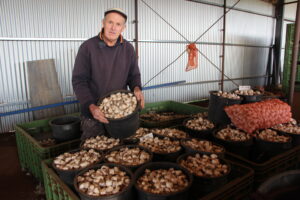
system,” Peter said.
“By 2000 I had really started expanding the acreage on the back of quality seed we were bringing in — seed that would work really well in our type of country.”
Country that is very marginal (at best) and which Peter describes as desert, with not too much rain, plenty of sun and wind — in an open area.
The kind of setting that would spell doom for just about any other commercial crop but where garlic seems to thrive (it even reacts to the length of a day).
That said, you need to also work with varieties that suit your country and your management programs.
And never forget how adamant Peter is about his maxim — garlic is very bloody touchy.
But as tricky as it might be to get the garlic to the consumer, the demand doesn’t seem to have peaked yet.
Peter recalls the early boom years, so welcome after the farm’s previous struggles against the Chinese agricultural juggernaut.
“Production in the industry was on the up just in time to catch that explosion of cooking shows on TV, and every one of them was using, and raving about, garlic.
“It got so much publicity, and at the same time the current surge to buy Australian was really getting some traction — so it all came together at the right time for garlic growers like me.”
But it couldn’t be all beer and skittles forever; Peter is facing the same challenges as everyone else in agriculture — getting workers when needed for sowing, harvest and packing.
And things have got so tough, he has halved his growing program from the usual 4ha to just two — and even there he is already pushing himself to the limit.
Then in April he was finally forced to temporarily close, when he could have been selling garlic hand over fist to people, chefs, restaurants and growers all chasing his blue ribbon product.
“We machine harvest but still need labour for the hands-on work such as cutting off the stems, checking each bulb [ugly vegies are not accepted by most customers] and then packing them for sale,” Peter said.
“There’s just no-one around — the almond industry sucks up a lot of people and it offers full-time, not seasonal, employment. I need help planting but it can be all over in four days.
“Even I find myself telling people the secure full-time job has to be a better gig than seasonal.
“My dad has passed away and Mum is 90 in September, but she, Nancy, my wife, and I, well, we’re the processors because there’s no-one else.
“We needed eight to 10 people to top garlic and got two. We needed two to pack and got none. It is labour intensive.”
As well as being a cutting-edge grower, and provider of new varieties, the Hacketts do a lot of trials to identify highly productive, quality strains for their own use as well as for their customers.
Most recently, Tooley Garlic has been trialling 11 garlic varieties since 2015, culled and eliminated five of those in 2021 and then started to bulk up the remaining six in the 2021 planting season.
This year is the first time the business has made any available for general purchase.
Tooley sells its garlic varieties (with plant health certificate supplied where required) to the Northern Territory, Queensland, NSW, ACT, Victoria and South Australia — but not Western Australia or Tasmania, where quarantine requirements make the final cost too much.
Peter might be restricted to certain states, but there are no restrictions on the research and development in which he gets engaged.
And when it comes to the biggest of the big ones, Peter doesn’t hesitate.
In his mind it’s the decision made 20 years ago to start working with South Australian garlic producers Raelene and Roger Schmitke, describing Roger as the best garlic grower ever.
“Roger Schmitke’s contribution to the Australian garlic industry is unparalleled.”
Among many other achievements, Roger is the man who pioneered vernalisation in the garlic industry.
Peter says one of the biggest upsides of vernalisation is it removes viruses from the garlic without any negative impact on the plant.
He says viruses are always a risk for growers as the garlic already carries leek yellow stripe virus and onion yellow dwarf virus, which belong to the potyvirus group and both cause ‘garlic mosaic’.
If they are present in combination, heavy viral loads can reduce bulb size and crop yield. It can also be transmitted by insects — and onion thrip would be the worst of the lot.
“Garlic also hates wet weather, and it can cause a serious fungal problem, although vernalised plants clearly show more resilience under these conditions,” Peter said.
Tooley Garlic targets the 40mm to 70mm garlic, although some will go to 80mm-plus. Peter said many people prefer 25mm to 30mm and smaller, but in reality you should try not to grow them.
Instead he has focused on developing the high-yielding varieties within the options brought into Australia through its strict quarantine protocols.
“You can’t keep track of them all, but you pick up the talk here and there about which ones are doing what — but if I sell red garlic bulbs to 100 people, 80 per cent of them will rebrand it something else when they sell their crop. That’s marketing.
“But for us, it’s got to be high yielding, that’s where you make your money.”
And Tooley Garlic is a very with-it business, a strong — and growing — online customer base that took a big jump during COVID-19 lockdowns is increasingly driving its success.
“Farmers’ markets and the like didn’t really do it for me,” Peter said.
“Now the smallest order I will handle is 1kg, which is available for small consumers, and for the larger consumers I can do thousands of kilograms — with the seed business also expanding into the backyard market, where everybody is realising the Australian garlic is the best one for them.
“The Northern Hemisphere garlic really struggle here, just don’t take to the climate and the geography.
“I would say right now my business is split right down the middle, 50 per cent is garlic for eating and 50 per cent for planting.”
Now, if Peter could in some way influence the length of the day, his world would be complete.

